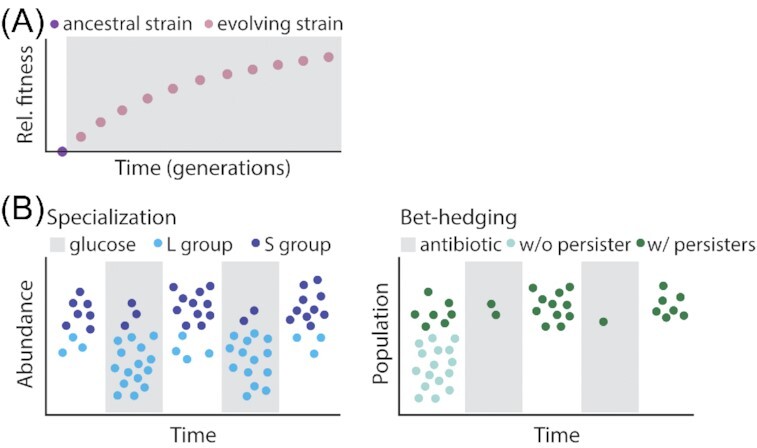Figure 5.

Environmental fluctuations drive the evolution of adaptive traits in microbial populations. (A) Environmental change drives evolutionary adaptations. Experiments propagating E. coli in a constant environment have shown that the fastest rates of evolution adaption occur within the first 5000 generations evolved in a new environment (gray), after which the accumulation of beneficial mutations begins to slow (Cooper and Lenksi 2000; Tenaillon et al. 2016). (B) Evolutionary adaptations in fluctuating environments can be classified into two groups: (i) specializations and (ii) bet-hedging adaptations. Specializations are adaptations that increase population growth in one of the multiple conditions that the environment fluctuates between, such as the L group's advantage in glucose and the S group's advantage in zero glucose (Rozen and Lenksi 2000; Rozen et al. 2009). Bet-hedging adaptations, such as persister cells in E. coli populations (Balaban et al. 2004), decrease population growth in any one condition but increase population growth when the population experiences fluctuations. Colors specify populations (i.e. populations with or without persisters), not phenotypes (i.e. persister vs normal growing cell).
